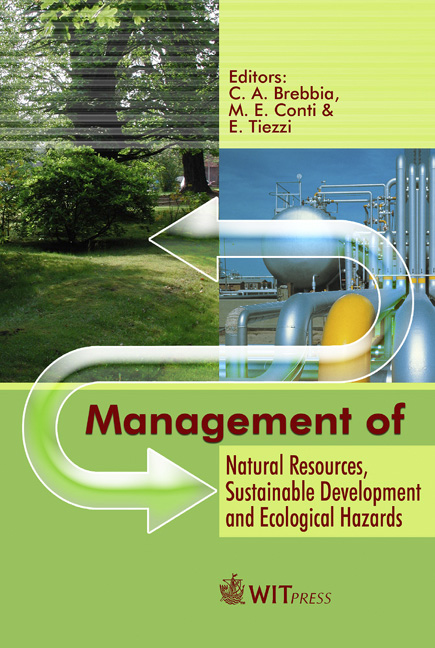Particle-tracking Method Applied To Transport Problems In Water Bodies
Price
Free (open access)
Transaction
Volume
99
Pages
11
Published
2006
Size
685 kb
Paper DOI
10.2495/RAV060501
Copyright
WIT Press
Author(s)
F. C. B. Mascarenhas & A. E. Trento
Abstract
In this work a particle-tracking model was implemented and applied to simulate the instantaneous injection of a dye tracer in the Setubal Lagoon, Santa Fe, Argentina. It focused on the study of the water quality problem generated in point sources of contaminated water through a rainfall drainage system. This problem is difficult to treat with the so-called Eulerian methods. The interpolation for the field velocity, the number of particles used in the simulations, the representation of boundary conditions and the mesh size for the calculation of concentrations are discussed. A field experiment using tracers is described in order to compare the numerical results and the simulations with real data. The diffusion coefficients calculated from the experiment and the hydrodynamic modelling give the necessary inputs for the simulations using the particle-tracking modelling of the measured four clouds. The results support the main advantages of this method in terms of strict mass conservation, good representation of high concentration gradients and point sources and as a consequence, a good representation of the maximum concentration and the general form of the clouds. Keywords: particle-tracking, Lagrangian, dispersion, Setubal. 1 Introduction Point sources in water quality problems, like rainfall runoff outlets, are difficult to represent in the so-called Eulerian methods, and the particle-tracking method may represent a good alternative for solving this kind of transport problems. In a pioneer work Chorin [1] employed the particle-tracking method, solving the Navier-Stokes equations, for determining the vorticity field of the two-
Keywords
particle-tracking, Lagrangian, dispersion, Setubal.





